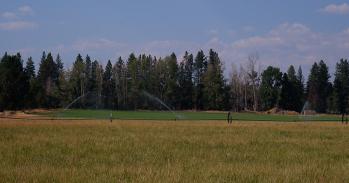
Those in ex-mining areas are also less likely to vote for new populist and nationalist parties compared to socio-economic counterparts elsewhere. Researchers argue that the modern Left may have lost these communities to “apathy and cynicism”.
Those in ex-mining areas are also less likely to vote for new populist and nationalist parties compared to socio-economic counterparts elsewhere. Researchers argue that the modern Left may have lost these communities to “apathy and cynicism”.
Narratives of decline loom large in the current identity of old mining areas, even though the working lives of most residents started long after the pits closed
Maria Abreu
Communities once reliant on the coal industry are now more politically disenchanted, with residents less likely to vote, than places with similar levels of deprivation but without the “narrative of decline” that holds sway in former mining areas.
Researchers from the University of Cambridge and Cardiff Business School used survey data on social and political attitudes gathered across Britain between 2009-2019, a decade dominated by austerity and Brexit.
The team identified neighbourhoods that had seen large numbers employed by the coal industry in the early 1980s. Survey respondents from these areas were 'matched' to respondents with similar personal characteristics, income levels and education from locations with comparable levels of poverty – but no history of mining.
The overall trend revealed that people now living in communities once dependent on coalmining are less engaged in – and feel far less knowledgeable about – politics than those in equivalent 'left behind' neighbourhoods.
Residents of coalfield areas are less likely than their socio-economic counterparts to have voted in the last election, are much less likely to say they intend to vote in future, and believe the same to be true of their neighbours.
They are also more cynical about the overall effectiveness of democracy, and more likely to believe that “public officials don’t care”.
Self-reported mental health was found to be significantly lower in former mining communities than in similarly deprived areas, while scepticism towards climate change was slightly higher, as was a positive attitude towards working mothers.
The study, published in the journal Applied Geography, used responses from over 14,000 individuals who were surveyed every year.
“Narratives of decline loom large in the current identity of old mining areas, even though the working lives of most residents started long after the pits closed,” said study co-author Dr Maria Abreu from the University of Cambridge.
“For people in communities that saw sudden and rapid economic decay, there appears to be an increased insularity and distrust of political systems compared to those who are also deprived, but do not have a shared local history of decline.”
The study shows an uptick of political engagement over the Brexit campaign period, with ex-mining areas leaning towards Leave. But even Brexit doesn’t raise political interest to the level seen in comparable locations beyond the referendum campaign period.
In fact, political engagement continues to climb in other ‘left behind’ areas, while in the former mining communities it drops off again after 2017.
This discontent with contemporary politics also extends to newer populist and nationalist parties. While they favoured Leave in the referendum, those in coalfield communities are still less likely to vote for UKIP, the SNP or Plaid Cymru than those in other areas with similar social and economic struggles.
“It seems that the modern Left may not have lost the people in former mining communities to populism or emerging nationalist parties, but rather apathy and cynicism,” said Abreu, from Cambridge’s Department of Land Economy.
In addition, and contrary to cinematic depictions and public perceptions, the research didn’t detect any greater sense of community cohesion in former mining neighbourhoods compared to other economically depressed areas.
“It’s been over thirty years since large numbers of people went underground for work, plenty of time for strong social relationships to dwindle,” said co-author Dr Calvin Jones from Cardiff Business School. “Loss of solidarity among these communities may have been compounded by austerity in recent years.”
“However, it is also possible that the other deprived communities to which we compared former mining areas – from housing estates to rundown seaside towns – actually have higher levels of social cohesion than might be expected.”
The study used individual-level data from the last decade, collected by the Understanding Society survey (UK Longitudinal Household Survey). The researchers broke this down into small census areas – neighbourhoods of around 1,500 people – and combined it with other socio-economic data to match individuals living in coalmining areas to those in other areas with comparable levels of deprivation, welfare spending, and ruralness.
To define former coalmining communities, Abreu and Jones used 1981 census data to identify areas where at least 10% of adult males had been employed in the “Energy and Water” sector, and overlaid this with geological maps to whittle down to those neighbourhoods within 10 miles of bedrock coal deposits.
Communities that met these criteria are dotted across much of the north and midlands, with particular concentrations found in South Wales, northeast England and Tyneside, the Lanarkshire coalfields south of Glasgow, and the midlands between Nottingham and Leeds.

The text in this work is licensed under a Creative Commons Attribution 4.0 International License. Images, including our videos, are Copyright ©University of Cambridge and licensors/contributors as identified. All rights reserved. We make our image and video content available in a number of ways – as here, on our main website under its Terms and conditions, and on a range of channels including social media that permit your use and sharing of our content under their respective Terms.




